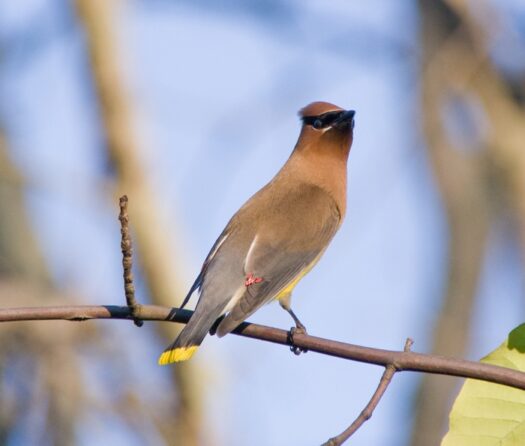Cedar Waxwing
Cedar Waxwings are a beautiful medium-sized songbird found along the coast of British Columbia year-round. They are a sleek grey colour with brown and yellow highlights, wear a black mask bordered in bright white on their crescent-shaped heads, and the tip of their tail feathers are a vibrant yellow.
‘Waxwing,’ as they are named, refers to their brilliant red-tipped wings which look as though they have been dipped in wax, a feature derived from their high-fruit diet. Cedar Waxwings are commonly found in large flocks and can best be detected by their high-pitched drawn out squeaks and squeals from the canopies of tree-tops.
They are one of the few species of birds in North America that are capable of surviving on an all-fruit diet for a period of months, and sometimes may be susceptible to intoxication from fermented berries.

Photo by Color Chord
Year-round they enjoy the delicious variety of local berries, such as those offered by hawthorn and mountain ash, present in many Hedgerows in Delta. In the winter and in the summer time they tend to congregate around bodies of water to feed on flying insects as an added source of protein.
Their name ‘Cedar’ was christened due to their preference for juniper cones, which are commonly known as ‘cedar berries.’ Berries are even used as a display of affection; during courtship, a male will pass a berry to the female he fancies, should she accept, she will give a hop or two and pass it back and forth with the male a few times before eating it.
Cedar Waxwings are often found amongst old fields, grasslands including Grassland Set-asides, and woodland habitats, including farms and orchards offering fruiting trees from which to forage.
How Can You Help?
Your donation will work towards conserving important farmland and wildlife resources contained in the Fraser River delta.
